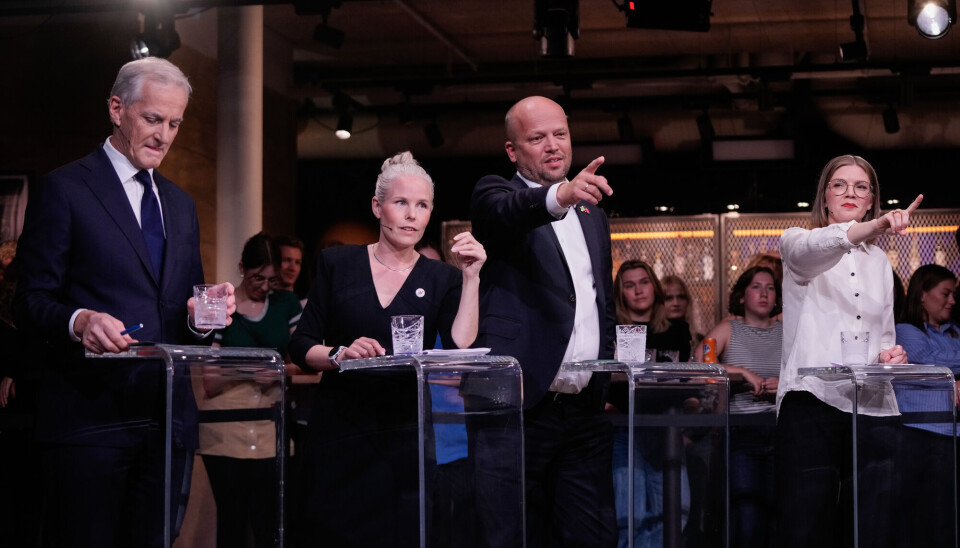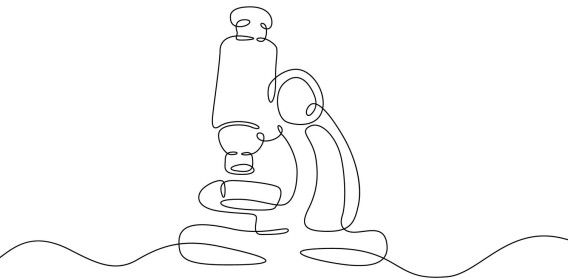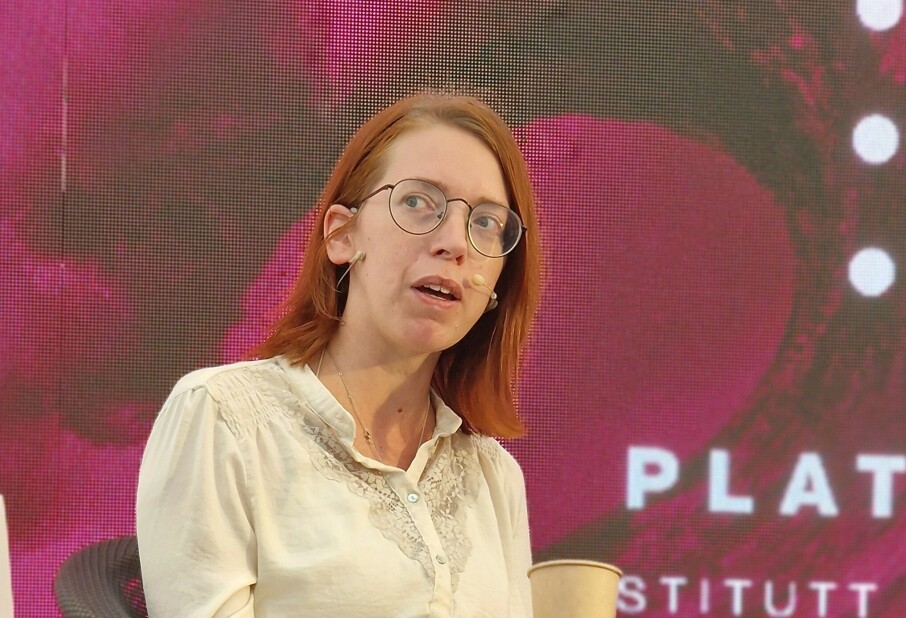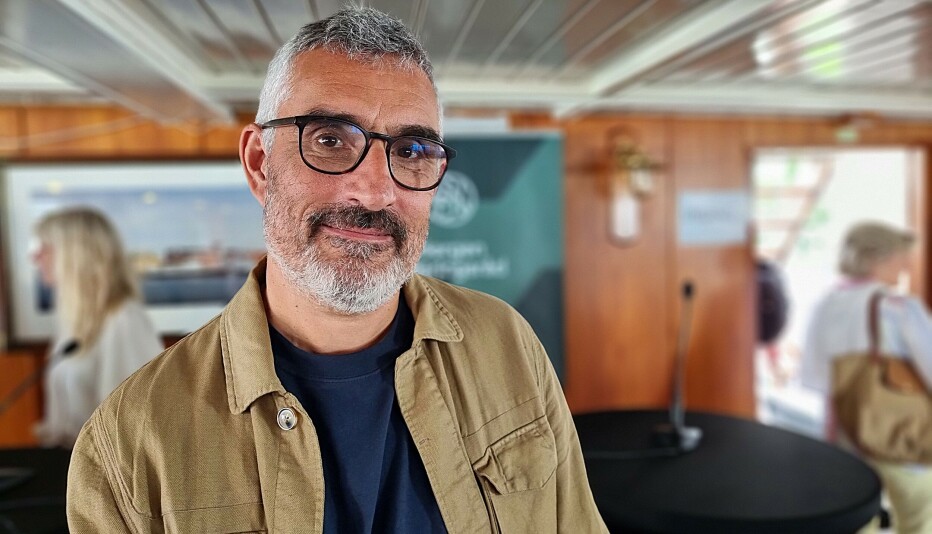Norway’s very special rule for election to parliament
That rule may allow the Labour Party to continue governing alone after this year’s election – with perhaps only about 25 percent of voters behind it.

In a recent opinion poll conducted by Respons Analyse, the Labour Party stands at 29.5 percent. However, the party could still secure government power even with lower numbers after the general election on Monday, 8 September.
In total, as many as six small parties could cross the electoral threshold and wield significant influence.
Is Norway facing political chaos?
“Probably not,” says Jonas Stein.
Recipe for political chaos
Stein is a political scientist and election researcher at UiT The Arctic University of Norway. He and his research colleagues have identified three explanations for why Norway manages to avoid political chaos – even though the country is governed by minority governments year after year.
After the election, the Christian Democratic Party (KrF), Centre Party (Sp), Socialist Left Party (SV), Red Party (Rødt), Green Party (MDG) and Liberal Party (V) could acquire a relatively large number of representatives in the Norwegian Parliament, or Storting.
In several other democratic countries, this would be a recipe for political chaos.

New elections are not an option in Norway
“The first explanation for why Norway doesn’t end up in chaos is that new elections cannot be held in Norway,” says Stein.
“The parties in the Storting are required to sit there for exactly four years, with the same number of mandates for the whole time.”
Norway is quite unique in this regard.
Norway and Switzerland are the only countries in Europe that do not allow new elections to be held for their national assembly. New elections cannot be held in the USA either. But there they elect a president.
A new government – with only the Labour Party
“The second explanation,” Stein says, “is that we have a tradition of cooperation and compromise in Norwegian politics. This might be the most important thing.”
“And the third explanation is that we also have what is called negative parliamentarism in Norway.”
The result of these three factors is that Norway can be governed by minority governments year after year.
These governments can either consist only of the Labour Party or only of the Conservative Party. Or they can consist of a few parties on the red or blue side, with a minority of the representatives in parliament behind them.
Only one majority government in the last 50 years
Over the past 50 years, Norway has had only one long-term majority government.
That was Jens Stoltenberg's second government from 2005 to 2013.
With the exception of the Gerhardsen era after World War II, it has been almost the rule that Norway is governed by minority governments.
Yet Norway appears to be a politically stable country.
In other countries, minority governments are constantly thrown out by the majority in parliament, because the opposition regards it as beneficial to hold new elections so they can get more votes.
But this isn’t possible in Norway.
Negative parliamentarism
Most viewed
The last of the three explanations – negative parliamentarism – refers to the fact that the government does not need the support of the majority in the Storting when it wants to decide something.
It only needs the majority not to oppose the government.
This arrangement is also particular to Norway and unlike many other countries, where the parliamentary majority must declare confidence in the government – or the government has to resign.
And then new elections are often called.
Norway has to go all the way back to 1963 to find a government – the Gerhardsen government – that had to resign due to a vote of no confidence in the Storting.
“After this year's election, Støre and the Labour Party can therefore continue to govern the country without having the confidence of the majority in the Storting. The Labour Party can do this as long as the majority in the Storting does not declare no confidence in the government.

Stein believes Støre will continue alone
Stein’s belief that Norway will again have a minority government consisting of only the Labour Party, with Jonas Gahr Støre at the helm, is of course related to the idea that the left does best in the opinion polls just preceding the election.
“On the red-green side, you have five parties with great tension between them,” he says.
“It’s exactly the same on the middle class side.”
“So it seems obvious to me that we’ll once again have a minority government, regardless of whether the red or blue bloc wins the election.”
Norwegian political culture
In an article in the latest issue of the Norwegian Journal of Political Science, Stein points out that both Norway and the other Nordic countries have a political culture that provides room for manoeuvre for minority governments.
Since political opponents largely trust that power will not be abused, the political parties have little to fear by remaining in opposition and tolerating minority governments, Stein writes in the article. He refers to research done by colleagues in Norwegian political science.
The opposition parties also experience that they have significant political influence in the Storting.
Broad political compromises give the opposition influence. It also makes it easier for a minority government to govern.
A more fragmented political landscape
“Both in Norway and a number of other European countries, we can see that the political landscape has become significantly more fragmented in recent years,” says Stein.
“This means that more parties are having a say in matters.”
A recent study by Stein and colleague Bjørn Erik Rasch at the University of Oslo shows that the number of “effective parties” in the Storting has never been as high as in 2025. In other words, Norway has never before had as many parties in the Storting with real influence on politics.
“This also makes coalition governments and minority governments significantly more likely,” says Stein.
Choosing to stay outside the government
Stein believes that this development has led to a new feature of the Norwegian political system.
Political parties in Norway sometimes choose to stay outside or leave the government, because they expect to gain more in terms of policy and voter support than if they participated in the government.
The Liberal Party in 2013, the Christian Democratic Party in 2013 and the Socialist Left Party in 2021 all chose not to enter government, while the Progress Party in 2020 and the Centre Party in 2025 chose to leave the government.
Finally, Stein points to an interesting international trend.
Recent global studies indicate that several democratic countries may be heading in the direction of the Norwegian system of government, with minority governments consisting of one or a few parties.
No political party in Norway has advocated that the country should follow the rest of the world and introduce the possibility of dissolving the Storting and holding new elections into our political system.
Perhaps with good reason.
References:
Jonas Stein: "How are governments formed in Norway?" Norwegian Journal of Political Science, August 2025.
Jonas Stein and Bjørn Erik Rasch: "Executive-Legislative Relations: Negative parliamentarism and its consequences for governing Norway", in Oxford Handbook of Norwegian Politics, Oxford University Press, 2025.
Translated by Ingrid P. Nuse
Related content
Read the Norwegian version of this article on forskning.no

Subscribe to our newsletter
The latest news from Science Norway, sent twice a week and completely free.





































